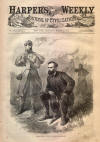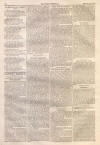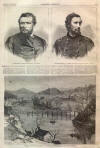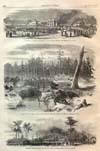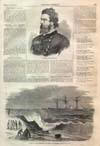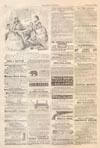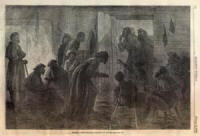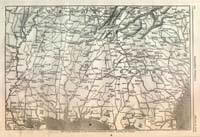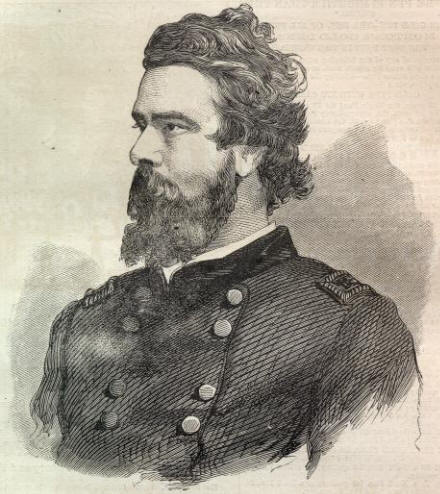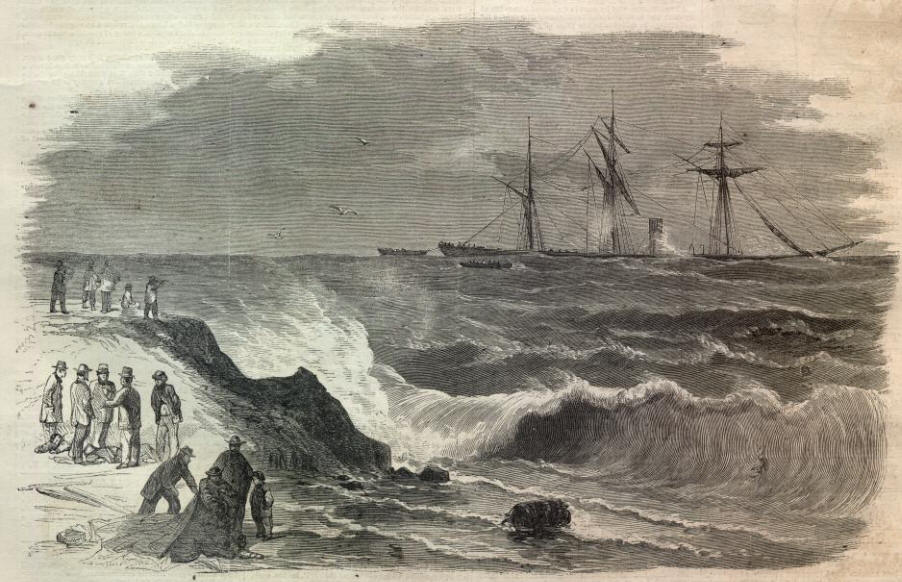appeared on Tuesday morning—the next after the vessel sunk. The steamer lies
about a quarter of a
mile from shore, in Staple's Cove, where she sunk in four fathoms of water, on a
sandy, pebbly bottom, with her bow off shore and two anchors out. The greater
portion of the hurricane-deck and officers' quarters have broken up, but the
main-deck and hull remain firm. As the baggage was stowed on the upper-deck and
under the bridge, it was all washed overboard, and will undoubtedly be a total
loss. The sea has swept every thing clear from that quarter.
Captain Borland, we learn, reports that he was entirely misled by the hazy state
of the atmosphere, and supposed that he was some four miles further off than he
proved to be. He also says that he was steaming but one and a half knots per
hour at the time, as he was anxiously looking for a pilot, and had been throwing
rockets and burning blue-lights for half an hour.
None of the officers were lost, but the loss of passengers is now reported at
twenty-six; besides five of the crew, thirteen more than was at first supposed.
Fifty-four mail-bags have been recovered, leaving but one to be accounted for.
A WISH.
DREARY
are the nights in winter,
When the north winds blow,
Shouting, shaking at the casement,
With a mighty woe—
Panting, sobbing through the darkness
Like a child that grieves;
Moaning at the doorway—creeping
Low, about the eaves.
But to-night the snow is lying
In a still moonlight
O my Love—whom Death has hidden,
Visit me to-night!
Can you hear me through the raptures
Of the shining fields?
Where the waste of rose and lily,
Breath of Eden yields;
Where you walk with troops of spirits
Purged from earthly tears—
Can you hear? For one short vision
I would linger years.
Come, my Love! the snow is shining;
You may walk in white,
As upon the floor of heaven,
If you come to-night
Not a print of mortal treading—
It is chastely meet—
You may walk, nor fear the soiling
Of your gentle feet.
Come! the dawn will shine upon it,
The great face of day—
Like a dream—in tears and silence,
It will melt away.
